Navigating 2025: Key Medical Staffing Trends Shaping the Future of Healthcare
The healthcare industry is at a crossroads, facing both unprecedented challenges and groundbreaking innovations. With an aging population, increasing demand for medical services, and rapid advancements in artificial intelligence, telemedicine, and workforce management, the way we recruit, train, and retain healthcare professionals is evolving faster than ever before.
Staffing shortages, burnout, and financial constraints continue to test the resilience of healthcare organizations, while new technologies and strategic workforce models offer hope for a more efficient and sustainable future. In 2025, the healthcare sector must adapt to these changes to ensure high-quality patient care and operational success.
This blog is designed to help healthcare leaders, professionals, and recruiters navigate this shifting landscape by exploring the most pressing medical staffing trends of the year. Whether you’re looking to stay ahead of workforce challenges, understand hiring shifts, or implement new recruitment strategies, this guide provides the insights you need to stay competitive, informed, and prepared for what’s ahead.
Let’s explore the top medical staffing trends of 2025 and what they mean for healthcare organizations, job seekers, and industry professionals.
1. Persistent Workforce Shortages
The demand for healthcare services continues to outpace the supply of qualified professionals, with shortages in critical roles such as registered nurses, physicians, and nursing assistants. An aging workforce, increased chronic health conditions, and burnout are contributing to this ongoing crisis. Addressing these shortages will require a combination of recruitment incentives, improved working conditions, and innovative staffing models.
2. Flexible Work Models and Telehealth Expansion
Telehealth has become an essential part of modern healthcare, offering remote access to medical services and providing more flexible work arrangements for healthcare professionals. Remote healthcare roles, including telemedicine providers and medical coders, are expected to grow significantly, reflecting a shift toward more adaptable care delivery models. Organizations that embrace flexible work arrangements will have a competitive advantage in attracting top talent.
3. Integration of Artificial Intelligence in Healthcare
Artificial intelligence is transforming healthcare operations, from diagnostics to workforce management. More than ever, AI is being used to enhance efficiency, predict staffing needs, and streamline recruitment processes. Healthcare organizations that leverage AI-powered tools can reduce administrative burdens, improve patient outcomes, and optimize resource allocation.
4. Focus on Mental Health and Well-being of Healthcare Workers
The past few years have underscored the importance of prioritizing the mental health of healthcare professionals. High levels of stress and burnout have led to significant workforce attrition, making it critical for organizations to invest in mental health resources. Strategies such as virtual therapy, wellness programs, and improved work-life balance initiatives are becoming standard to support the well-being of healthcare staff.
5. Data-Driven Workforce Management
The healthcare sector is generating massive amounts of data, and organizations are using it to optimize workforce planning. Predictive analytics and AI-driven scheduling tools are helping hospitals and clinics allocate staff more efficiently, reducing burnout and improving patient care. The ability to analyze staffing trends in real-time is becoming a crucial competitive advantage.
6. Persistent Nursing Shortages
Nursing shortages remain one of the biggest challenges in healthcare. A wave of retirements, coupled with faculty shortages in nursing education, has made it difficult to train and retain enough nurses to meet demand. Organizations are turning to incentives such as student loan forgiveness, tuition reimbursement, and residency programs to attract and retain nursing talent.
7. Increased Cybersecurity Measures in Healthcare
As healthcare systems become more digital, cybersecurity threats are on the rise. With patient data security at stake, organizations are investing in stronger cybersecurity infrastructure, staff training, and compliance measures to protect sensitive information. The demand for healthcare IT professionals who specialize in data protection is expected to grow significantly.
8. Growth of Travel Nursing and Per Diem Staffing
Travel nurses and per diem staff have played an important role in maintaining patient care, especially during the pandemic. While the demand for these roles surged in recent years, organizations are now seeking ways to balance cost efficiency with the need for flexible staffing solutions. Travel nurses will continue to be essential in filling workforce gaps, but efforts to stabilize the permanent workforce are also gaining traction.
9. Emphasis on Diversity, Equity, and Inclusion (DEI)
Healthcare organizations are making diversity, equity, and inclusion a priority, recognizing that a diverse workforce leads to better patient outcomes and improved workplace culture. Many employers are implementing targeted recruitment efforts, mentorship programs, and leadership initiatives to ensure greater representation across all levels of healthcare.
10. Financial Challenges and Budget Constraints
Rising labor costs, inflation, and reimbursement pressures are forcing healthcare organizations to rethink their financial strategies. Workforce optimization, cost-effective staffing models, and AI-driven efficiency improvements are becoming critical for maintaining financial stability while delivering high-quality patient care.
Preparing for the Future of Healthcare Staffing
Navigating these trends requires healthcare organizations to adopt flexible strategies, embrace technological advancements, and prioritize workforce well-being. Partnering with experienced staffing agencies like Scion Medical Staffing can provide access to qualified candidates and help healthcare facilities adapt to the evolving industry landscape.
If you're looking for expert support in hiring top medical talent, contact our team today to learn how we can help meet your staffing needs and achieve your organizational goals.
Employment Outlook and Salary Trends in the U.S. Healthcare Sector
The U.S. healthcare sector is poised for significant growth, offering abundant opportunities for professionals across various disciplines. Understanding the employment outlook and salary trends is essential for both job seekers and employers aiming to navigate this dynamic landscape effectively.
Projected Employment Growth
The healthcare industry is expected to add approximately 1.6 million jobs from 2023 to 2033, accounting for about 24% of all new jobs in the U.S. economy during this period. This growth underscores the sector's resilience and its critical role in addressing the nation's evolving healthcare needs. altarum.org
High-Demand Roles
Several healthcare positions are projected to experience substantial growth by 2025:
Physicians and Surgeons: Employment for physicians is anticipated to grow by an average of 4% until 2033, resulting in an estimated 23,600 job openings. medicushcs.com
Nurse Practitioners and Physician Assistants: These roles are expected to see significant growth due to an increased focus on preventive care and the expansion of healthcare services to underserved areas.
Mental Health Professionals: With a growing emphasis on mental health, there is an increased demand for psychologists, counselors, and social workers.
Salary Trends
Compensation in the healthcare sector varies based on specialization, experience, and geographic location. Here are some notable salary insights:
Physicians and Surgeons: These professionals remain among the highest-paid, with specialties like anesthesiology and surgery commanding average annual salaries ranging from $350,000 to over $600,000. protouchstaffing.com
Nurse Anesthetists: As advanced practice registered nurses, nurse anesthetists have a median salary of approximately $212,650, reflecting their specialized skills and critical role in surgical procedures. Becker's Hospital Review
General Healthcare Roles: The average salary across various healthcare positions is approximately $66,967 per year, with entry-level roles starting around $38,904 and experienced professionals earning up to $130,200. Talent.com
Geographic Variations
Salaries can vary significantly based on location. For instance, metropolitan areas like Seattle are among the nation's top-paying regions for healthcare professionals, particularly for roles such as obstetricians and IT managers in healthcare settings. axios.com
The U.S. healthcare sector offers a robust employment outlook with competitive salaries, especially for specialized and high-demand roles. As the industry continues to evolve, staying informed about these trends is crucial for professionals and organizations aiming to thrive in this dynamic environment.
Scion Medical is Your Preferred Healthcare Staffing Partner!
With so many different trends to keep up on in the world of healthcare and medical staffing, having a reliable staffing partner can be an incredible ally in times of dire need. Scion Medical can help provide qualified candidates in the healthcare staffing market! Our proven method of recruiting the top talent in the medical field can help you fill the gaps in your staffing or help you find your next big hire! Contact our experienced medical recruitment team today or visit our website to learn more about how we can help your healthcare institution!

